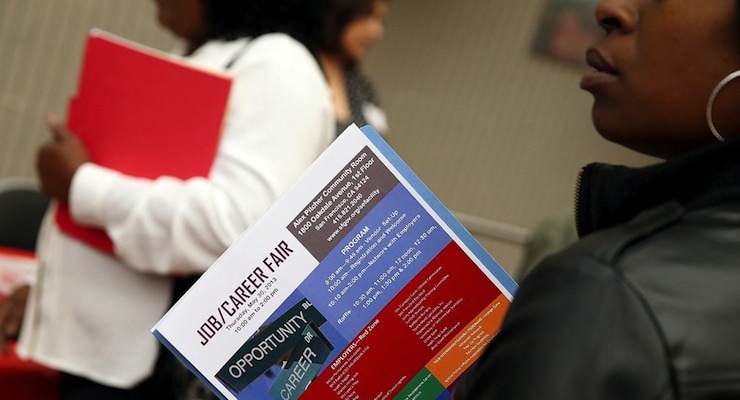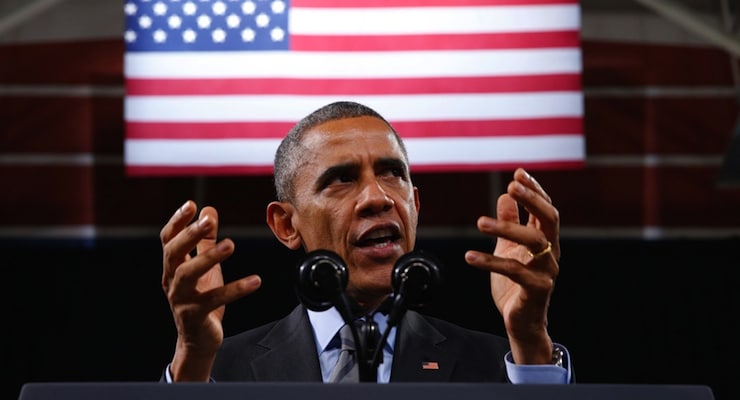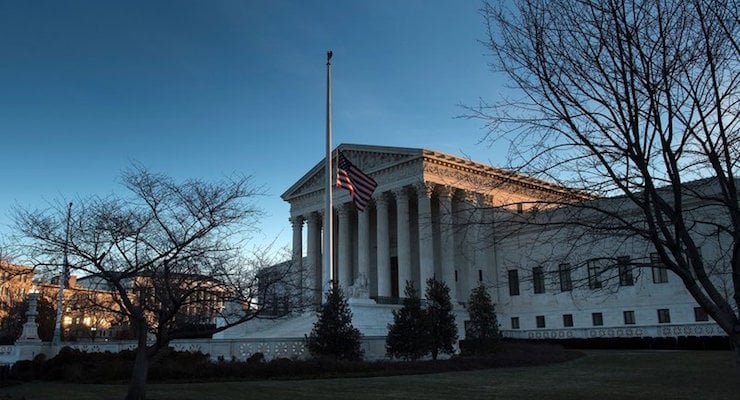Regulation Nation

Regulations (Photo:ShutterStock)
If you look at the methodology behind the major measures of economic liberty, such as Economic Freedom of the World and Index of Economic Freedom, you’ll notice that each nation’s regulatory burden is just as important as the overall fiscal burden.
Yet there doesn’t seem to be adequate appreciation for the importance of restraining red tape. I’ve tried to highlight the problem with some very depressing bits of information.
- Americans spend 8.8 billion hours every year filling out government forms.
- The economy-wide cost of regulation is now $1.75 trillion.
- For every bureaucrat at a regulatory agency, 100 jobs are destroyed in the economy’s productive sector.
- A World Bank study determined that moving from heavy regulation to light regulation “can increase a country’s average annual GDP per capita growth by 2.3 percentage points.”
Unfortunately, these bad numbers are getting worse.
 We start with the fact that there’s a natural tendency for more intervention in Washington because of the Obama Administration’s statist orientation.
We start with the fact that there’s a natural tendency for more intervention in Washington because of the Obama Administration’s statist orientation.
That’s the bad news. The worse news is that this tendency to over-regulate is becoming more pronounced as Obama’s time in office is winding down.
I’ve already opined on the record levels of red tape emanating from Washington, but it’s getting even worse in the President’s final year.
Here’s what the Wall Street Journal recently wrote about the regulatory wave.
…government-by-decree that is making Mr. Obama the most prolific American regulator of all time. Unofficially, Mr. Obama’s Administration has once again broken its own record by issuing a staggering 82,036 pages of new and proposed rules and instructions in the Federal Register in 2015. …That would not only eclipse Mr. Obama’s record of 81,405 set in 2010; it would also give him six of the seven most prolific years of regulating in the history of the American republic. He’s a champion when it comes to limiting economic freedom, and American workers have the slow growth in jobs and wages to prove it. …His Administration is also in a class by itself in issuing de facto rules as “notices” or “guidance” that are ignored by businesses at their peril. …And there’s much more to come.
Amen. The WSJ is correct to link the regulatory burden with anemic economic performance.
As I point out in this interview, red tape is akin to sand in the economy’s gears.
[brid video=”34575″ player=”2077″ title=”Dan Mitchell Analyzing Obama’ Regulatory Surge”]
By the way, I can’t resist emphasizing that the Nordic nations, much beloved by Bernie Sanders and other leftists, generally are more free market than the United States on non-fiscal issues.
In other words, they have a more laissez-faire approach on matters such as regulation.
Now let’s try to quantify the cost of all this red tape.
The Washington Examiner reports on some new research.
The price of the Obama administration’s regulatory burden hit just shy of $200 billion last year, or $784 million for every day his government was open for business, according to a new analysis by American Action Forum.
To make matters worse, as I noted in the interview, I very much suspect the bulk of that new regulation was not accompanied by cost-benefit analysis. So the supposed benefits will be small and the actual costs will be high.
Let’s move from the general to the specific. The Heritage Foundation has a list of the worst regulations from last year. Here are some of the highlights, though lowlights would be a better term.
- …a ban by New Jersey on sales of tombstones by churches — adopted in March at the behest of commercial monument makers.
- Certain New York restaurants now have to include warnings on their menus about the sodium content in many popular dishes.
- The Occupational Safety and Health Administration…expanded its mandate in June by declaring that businesses should allow employees to use whichever restroom corresponds to their “gender identity.”
- …the Environmental Protection Agency and Army Corps of Engineers expanded their own jurisdiction to regulate virtually every wet spot in the nation.
And there are plenty more if you really want to get depressed.
But let’s not dwell on bad news. Instead, we’ll close by highlighting a potentially helpful bit of regulatory reform north of the border. Here are some blurbs from a story in the Washington Examiner.
…look to Canada for lessons from its experiment with regulatory budgeting. What is regulatory budgeting? It’s a process that seeks to use traditional budget concepts to better manage regulatory costs. The goal is to require government departments and agencies to prioritize and manage “regulatory expenditures,”… Regulatory budgeting imposes hard caps on departments and agencies and requires that new regulatory policies fit within their respective budgets. It may not be a silver bullet to the U.S. government’s regulatory profligacy, but with strong political leadership and a proper design, it can arrest the growth of new regulations and bring greater accountability, discipline and transparency to the process. …Departments and agencies are given a “baseline” calculation of regulatory requirements and the costs they impose on individuals and businesses, and then are expected to live within their respective budgets. This means — at least, in the case of the federal experiment — that any new regulatory requirements be offset by eliminating existing ones with equivalent “costs.” An independent, third-party panel verifies the government’s year-over-year compliance.
And it appears this new system is yielding dividends.
Over the past two years, the federal government estimates the system has saved Canadian businesses more than C$32 million in administrative burden, as well as 750,000 hours spent dealing with “red tape.” Most importantly, regulatory budgeting has gradually contributed to a more disciplined regulatory process by rewarding departments and agencies for finding lower-cost options and for making existing requirements smarter and less burdensome.
Hmmm…, maybe I should consider escaping to Canada rather than Australia if (when?) America falls apart.
In addition to this sensible approach on regulatory reform, Canada is now one of the world’s most economically free nations thanks to relatively sensible policies involving spending restraint, corporate tax reform, bank bailouts, the tax treatment of saving, and privatization of air traffic control. Heck, Canada even has one of the lowest levels of welfare spending among developed nations.
Though things are now heading in the wrong direction, which is unfortunate for our northern neighbors.
P.S. While the regulatory burden in the United States is stifling and there are some really inane examples of silly rules (such as the ones listed above), I think Greece and Japan win the record if you want to identify the most absurd specific examples of red tape.
[mybooktable book=”global-tax-revolution-the-rise-of-tax-competition-and-the-battle-to-defend-it” display=”summary” buybutton_shadowbox=”true”]
Measures of economic liberty such as Economic















